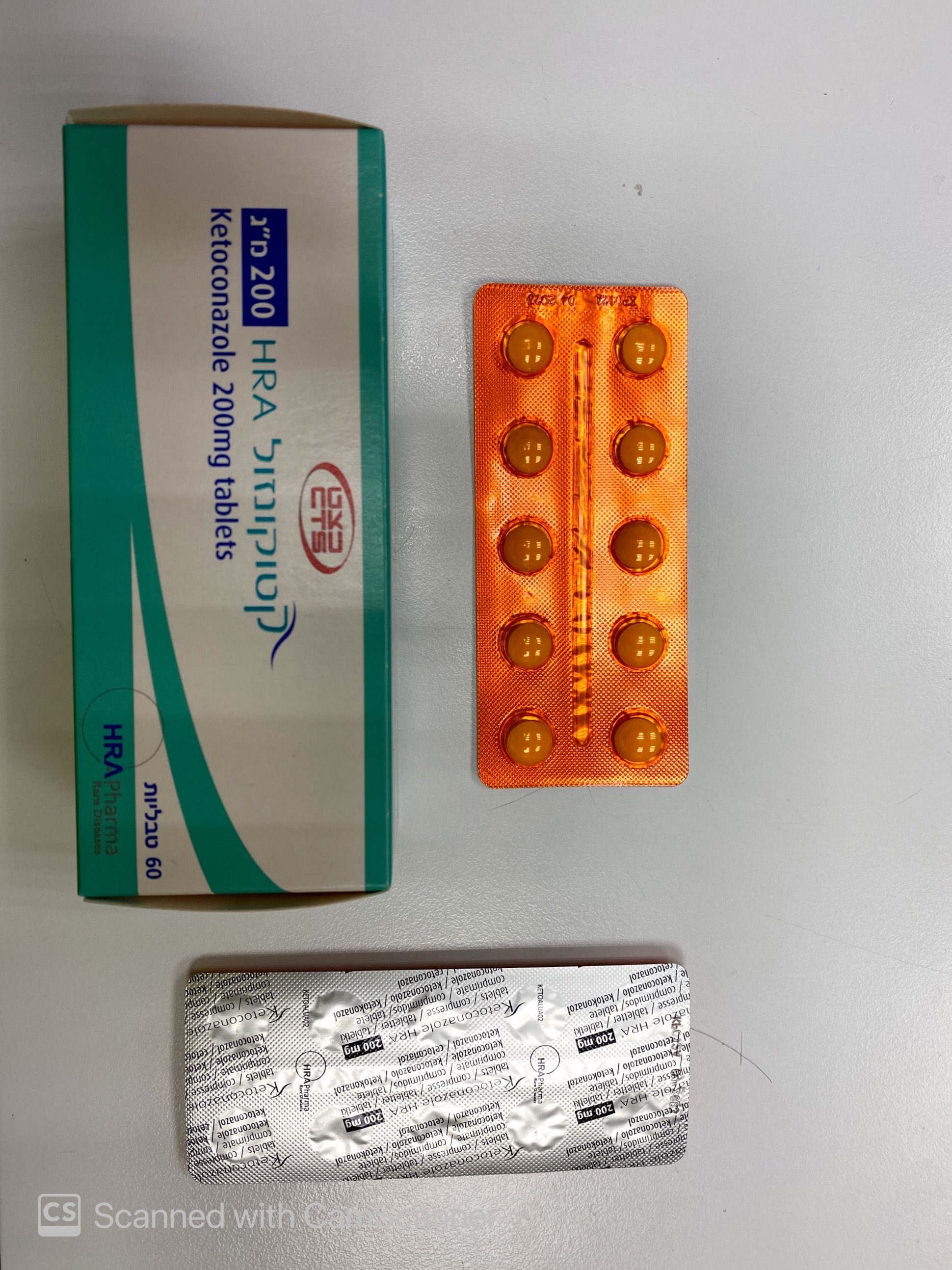Quest for the right Drug

קטוקונזול HRA 200 מ"ג KETOCONAZOLE HRA 200 MG (KETOCONAZOLE)
תרופה במרשם
תרופה בסל
נרקוטיקה
ציטוטוקסיקה
צורת מתן:
פומי : PER OS
צורת מינון:
טבליה : TABLETS
עלון לרופא
מינוניםPosology התוויות
Indications תופעות לוואי
Adverse reactions התוויות נגד
Contraindications אינטראקציות
Interactions מינון יתר
Overdose הריון/הנקה
Pregnancy & Lactation אוכלוסיות מיוחדות
Special populations תכונות פרמקולוגיות
Pharmacological properties מידע רוקחי
Pharmaceutical particulars אזהרת שימוש
Special Warning עלון לרופא
Physicians Leaflet
Posology : מינונים
4.2 Posology and method of administration Treatment should be initiated and supervised by physicians experienced in endocrinology or internal medicine and having the appropriate facilities for monitoring of biochemical responses since the dose must be adjusted to meet the patient’s therapeutic need, based on the normalisation of cortisol levels. Posology Initiation The recommended dose at initiation in adults and adolescents is 400-600 mg/day taken orally in two or three divided doses and this dose can be increased rapidly to 800-1,200 mg/day in two or three divided doses. At treatment initiation, 24-hour urinary free cortisol should be controlled every few days/weeks. Adjustment of the posology Ketoconazole daily dose should be periodically adjusted on an individual basis with the aim to normalise urinary free cortisol and/or plasma cortisol levels. - A dose increase of 200 mg/day every 7 to 28 days may be considered if urinary free cortisol and/or plasma cortisol levels are above the normal range, as long as the dose is tolerated by the patient; - A maintenance dose from 400 mg/day to a maximal dose of 1,200 mg/day taken orally in 2 to 3 divided doses may be required to restore normal cortisol levels. In most of the publications the maintenance dose varied between 600 mg/day and 800 mg/day; - When the effective dose of ketoconazole is established, monitoring of urinary free cortisol and/or plasma cortisol levels may be performed every 3 to 6 months (see section 4.4); - In the case of adrenal insufficiency and depending on the severity of the event, the dose of Ketoconazole HRA should be decreased by at least 200 mg/day or the treatment should be temporarily discontinued and/or a corticosteroid therapy should be added until the resolution of the event. ketoconazole can be reintroduced thereafter at a lower dose (see section 4.4); - Treatment with ketoconazole can be stopped abruptly without a need for progressive dose decrease where a change in the therapeutic strategy (e.g. surgery) is desired. Monitoring of liver function Before starting the treatment, it is mandatory: - to measure liver enzymes (ASAT, ALAT, gammaGT and alkaline phosphatase) and bilirubin - to inform the patients about the risk of hepatotoxicity, including to stop the treatment and to contact their doctor immediately if they feel unwell or in the event of symptoms such as anorexia, nausea, vomiting, fatigue, jaundice, abdominal pain or dark urine. If these occur, treatment should be stopped immediately and liver function tests should be performed. Due to the known hepatotoxicity of ketoconazole, the treatment must not be initiated in patients with liver enzymes levels above 2 times the upper limit of normal (see section 4.3). During the treatment: - close clinical follow-up should be undertaken - measurement of liver enzymes (ASAT, ALAT, gamma GT and alkaline phosphatase) and bilirubin, should be performed at frequent intervals: o weekly for one month after initiation of the treatment o then monthly for 6 months o weekly during one month whenever the dose was increased. In the case of an increase in liver enzymes of less than 3 times the upper limit of normal, more frequent monitoring of liver function tests should be performed and the daily dose should be decreased by at least 200 mg. In the case of an increase in liver enzymes equal to or greater than 3 times the upper limit of normal, ketoconazole should be stopped immediately and should not be reintroduced due to the risk of serious hepatic toxicity. ketoconazole should be discontinued without any delay if clinical symptoms of hepatitis develop. In case of long term treatment (more than 6 months): Although hepatotoxicity is usually observed at treatment initiation and within the first six months of treatment, monitoring of liver enzymes should be done under medical criteria. As a precautionary measure, in case of a dose increase after the first six months of treatment, monitoring of liver enzymes should be repeated on a weekly basis for one month. Dosing regimens for maintenance therapy Subsequent maintenance therapy can be administered in one of two ways: - Block-only regimen: the maintenance dose of ketoconazole may be continued as described above; - Block-and-replace regimen: the maintenance dose of ketoconazole should be further increased by 200 mg and concomitant corticosteroid replacement therapy should be added (see section 4.4). Special populations Elderly patients Data on the use of ketoconazole in patients older than 65 years are limited, but there is no evidence to suggest that specific dose adjustment is required in these patients (see section 5.2). Renal impairment Although data are limited, the pharmacokinetics of ketoconazole are not significantly different in patients with renal failure compared to healthy subjects, and no specific dose adjustment is recommended in this population. Hepatic impairment Ketoconazole is contraindicated in patients with acute or chronic hepatic impairment (see sections 4.3, 4.4 and 5.3). The treatment must not be initiated in patients with liver enzymes levels above 2 times the upper limit of normal. Paediatric population The safety and efficacy of Ketoconazole HRA in children aged less than 12 years have not been established. Currently available data are described in sections 4.8, 5.1 and 5.2 but no recommendation on a posology can be made. Method of administration Oral use.

שימוש לפי פנקס קופ''ח כללית 1994
לא צוין
תאריך הכללה מקורי בסל
לא צוין
הגבלות
לא צוין
מידע נוסף
